Watching the Thames tides
Walking by the river, unless you happen to time your arrival with that moment between tides at slack water, when it’s more or less still, you will see a current flowing either down or upstream. Either ebbing or flooding. Familiarity with the tides is essential for all who work on, or use the Thames for recreation but observing them is also interesting for anyone who is doing more than simply passing over or under the river.
On November 8th, the RNLI Tower Station, @TowerRNLI, tweeted a time lapse film capturing the first stages of an ebb tide from their station by Waterloo Bridge. This moment is also described by Iris Murdoch in Under the Net, as “a gentle and continuous pull”. The pull gradually strengthens and the speed of the outgoing tide can rise from 4 up to 8 knots depending on the amount of rainfall coming into the river from further upstream.
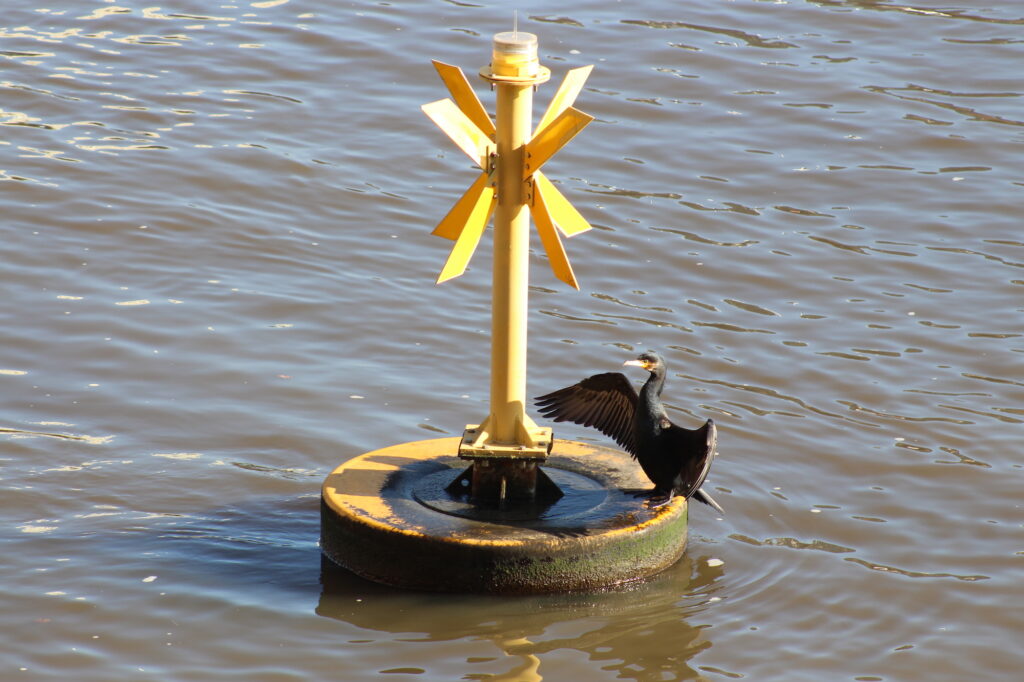
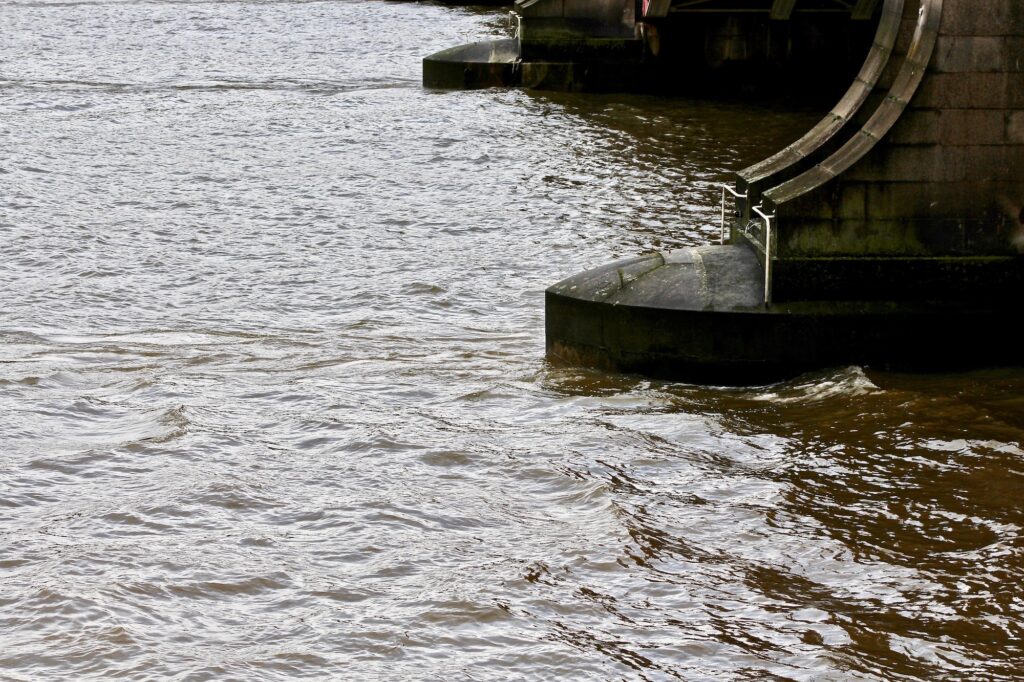
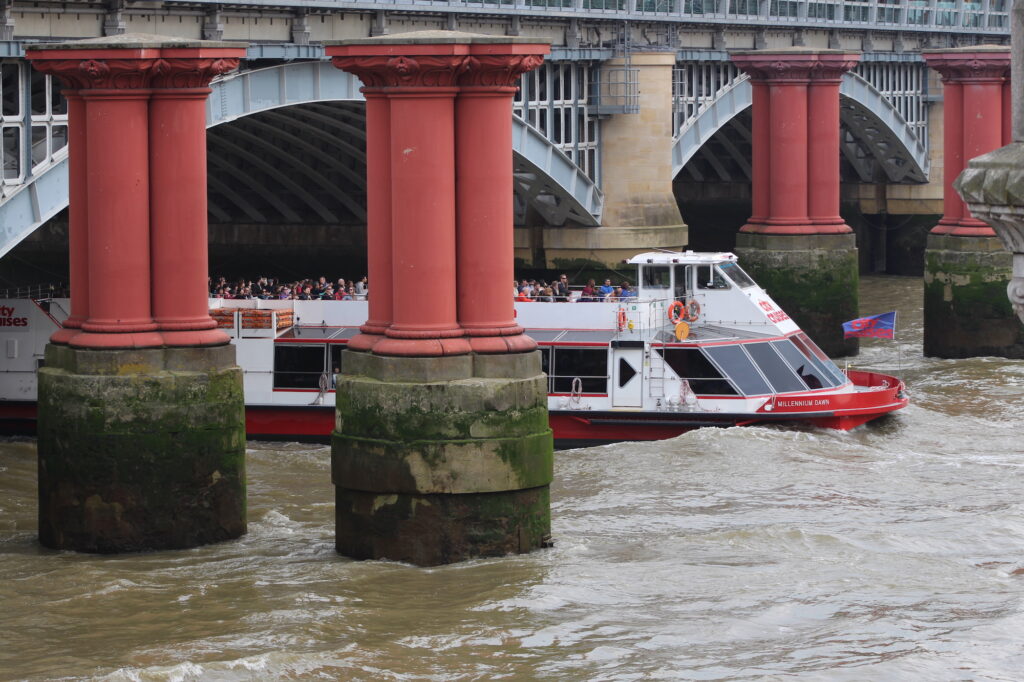
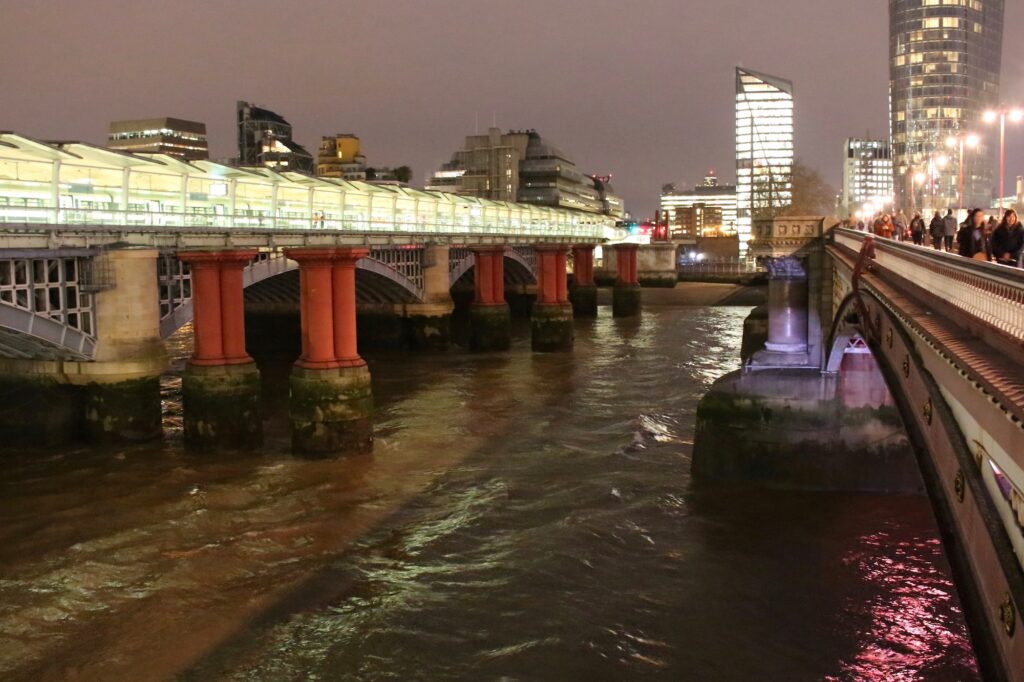
Pogue Muhone, who has kindly allowed me to quote from his article ‘Tidal Ebb and Flow’, explains the phenomenon, known as the Rule of Twelfths, which you might have heard of in relation to the speed of rising and falling tides on the coast. “Starting from slack water at low tide, the flow rate speeds up until half tide and then slows down until full tide.”
“It has been observed that the tide rises one twelfth of its range during the 1st hour; two twelfths in the 2nd hour; three twelfths during both the 3rd and 4th hours; slowing to two twelfths during the 5th hour, and finally to one twelfth in the 6th hour at full tide.” And the same goes in reverse for the ebbing tide. Though things don’t work in quite the same way on the Thames, these details are good to know, especially if you are absorbed in a walk on the foreshore at low tide, as after a slow start the tide can come in swiftly and you risk being cut off. If you watch attentively, you will become aware of subtle changes in the texture and movement of the water as you walk along the riverside and you will get to know its moods.
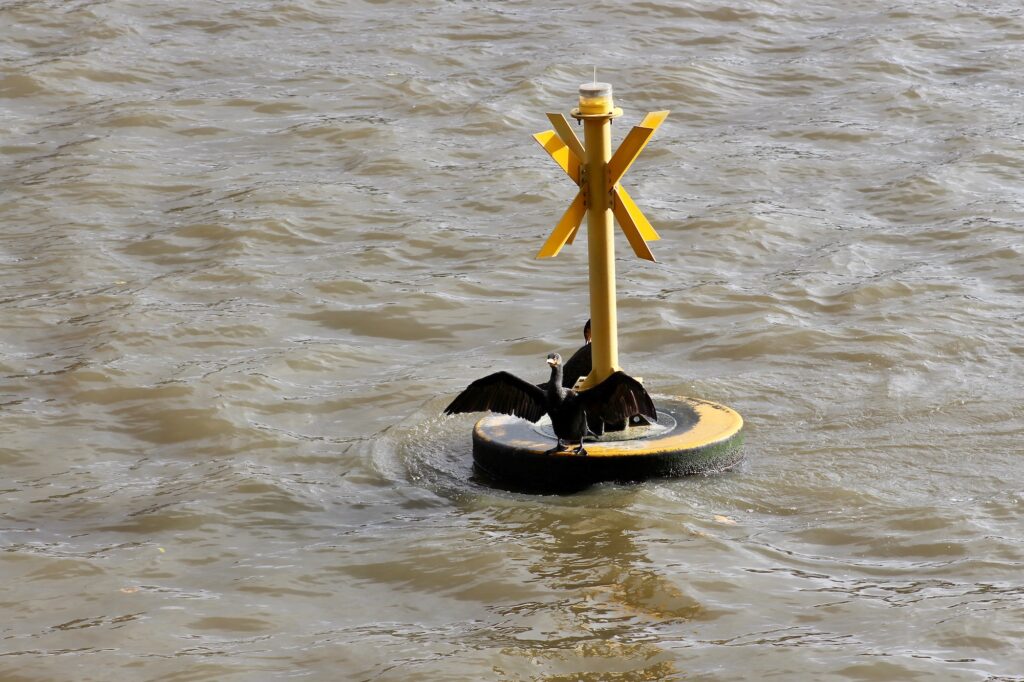
Pogue Muhone gives specific details on Thames tides: “Their timings vary enormously and Rivermen often observe the flood to be over seven hours and the ebb nearer five, which means that the flow rate at a given point tends to be faster on the ebb than on the flood. Under ‘ideal’ conditions the water flows at almost 8 knots (10 mph) in places.” This is fast…

There are a number of small beaches accessible at low tide along the central London Thames. Some, such as the once popular and glamorous Tower of London beach have been closed to the public for a while, others with their slippery steps and inhospitable foreshore, enjoyed only by mudlarkers and the sure-footed, have a limited appeal. Yet there are some, with sandy stretches such as Ernie’s Beach below Gabriel’s Wharf, that draw families and friends for a good beach session depending on the tide and, as I mentioned in my last piece, sand sculptors. All who go there, particularly those who venture onto one of the other Southbank beaches around the corner, must keep an eye on the tide. On occasions I’ve seen an RNLI Tower Lifeboat coming alongside, warning people to return to a part of the shore with steps up to the embankment. And I have seen some, caught out by the swiftly rising tide, having to wade through a foot of water to get back the safety of stairs or to the main beach. It is dangerous, for even at that depth the current can be powerful enough to sweep you off your feet.
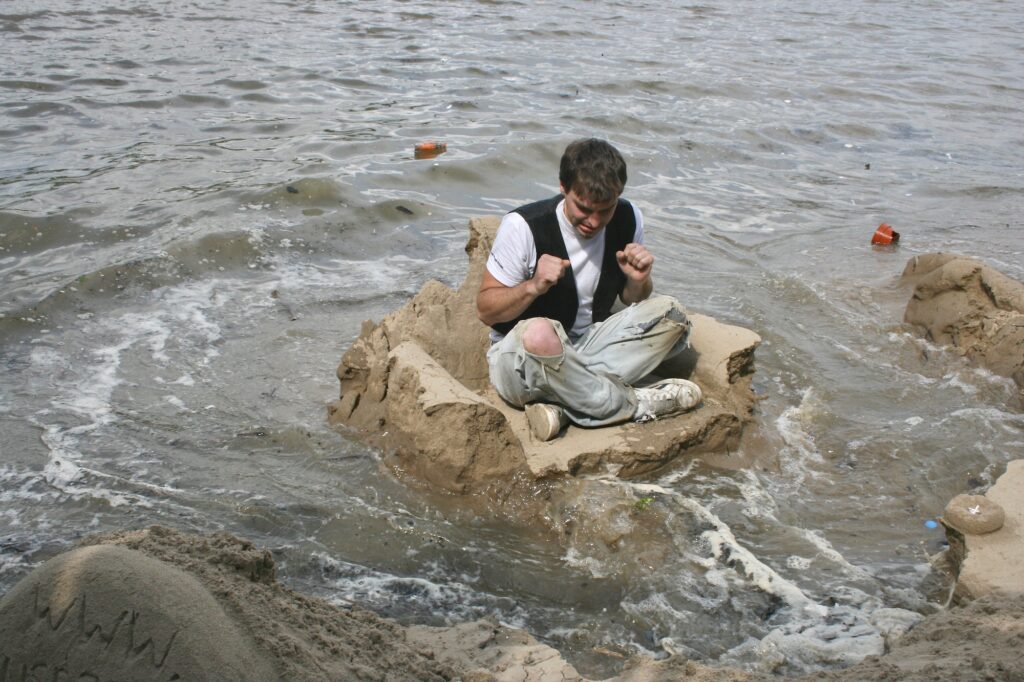
This sand sculptor who in 2007 entertained both beach goers and the crowds walking on the embankment above, was clearly familiar with the strength of the incoming tide and knew just when to abandon his *castle* to avoid a complete soaking.
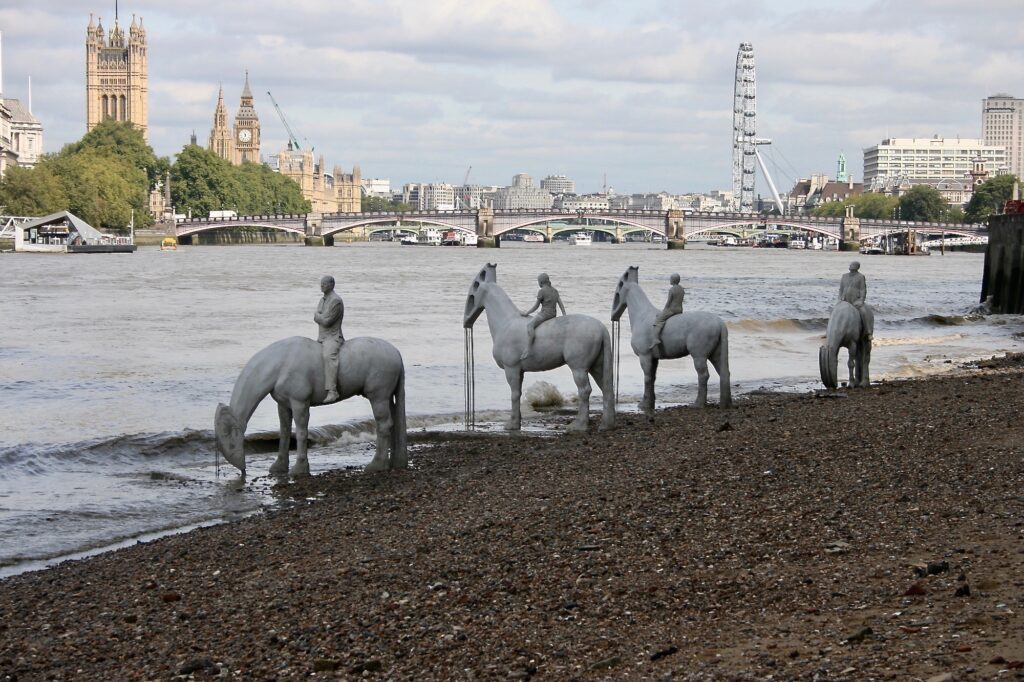
Longer lasting were the deCaires’ Rising Tide sculptures installed for the month of September 2015, on the Vauxhall foreshore. What I liked about them was firstly, while making his point about the dangers of ignoring the multiple threats to our environment, they were a striking addition to the riverscape set against a Palace of Westminster background as a warning message to politicians who have the power to shape our future. And secondly, views of the four horses and their riders were in constant movement, changing perspective with the tides, the time of day, and the weather.
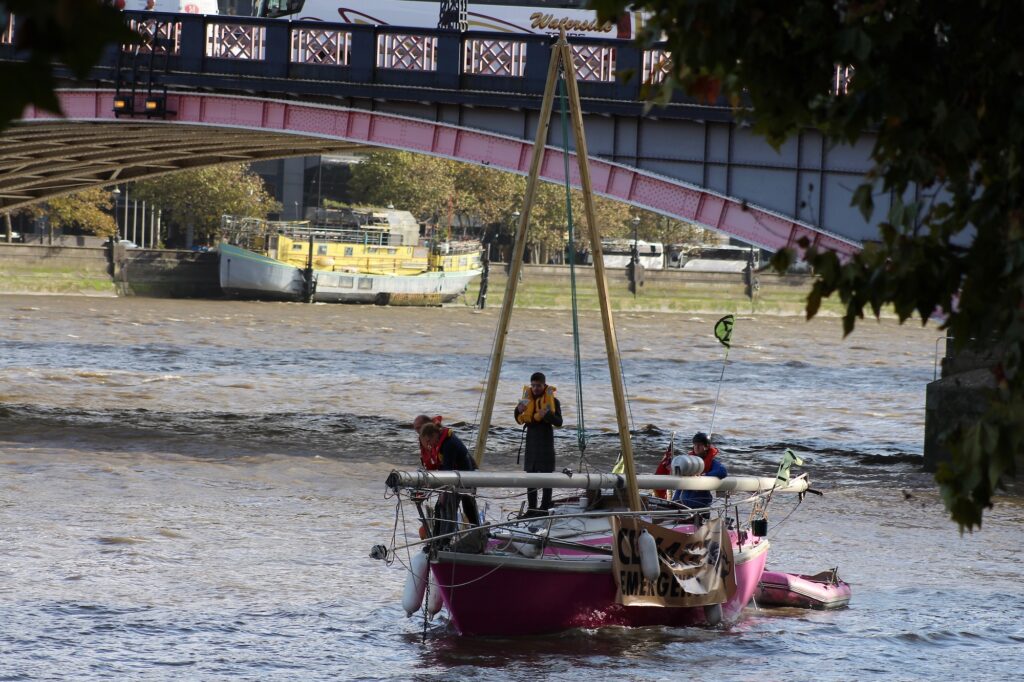
Another focus on the river to raise awareness of the climate emergency took place on October 18, 2019. Using one of their trademark pink boats to highlight their cause, the Extinction Rebellion yacht, having apparently been stranded, caught out by an ebbing tide below the Victoria Tower Gardens’ embankment, managed to re-float, only to be *kettled* next to Westminster Bridge by Police and Port of London launches concerned about the potential danger to the protesters and to other river users.
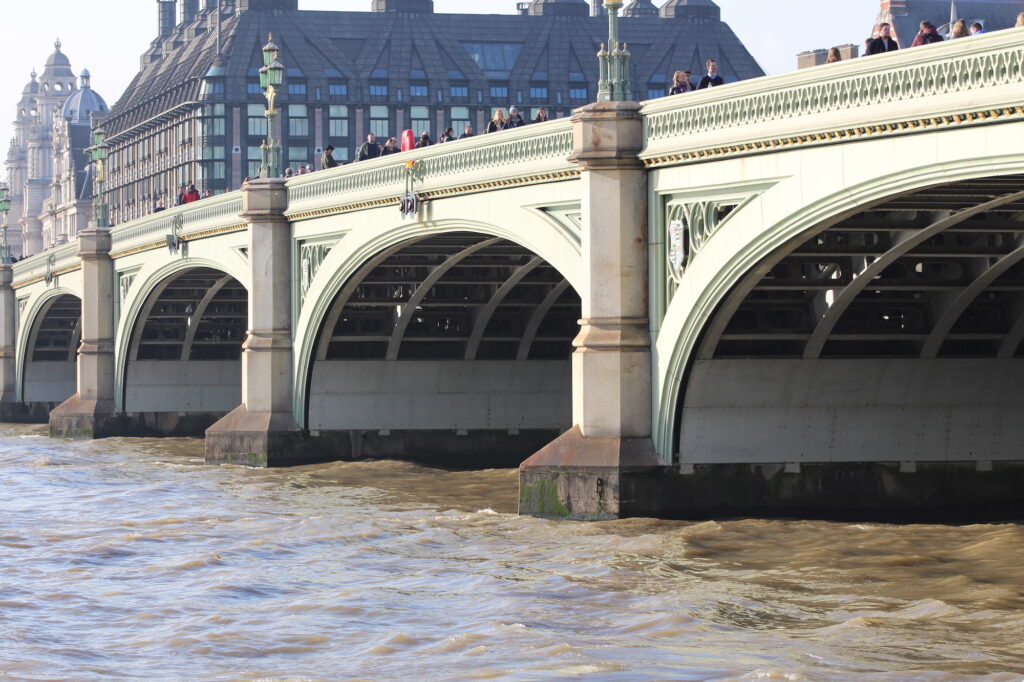
As mentioned earlier, at full flow the tides are fast-moving and muscular, added to which, should anyone fall into the river, there is the real danger of cold water shock, and drowning.
Experienced captains and amateurs, however, use the tides, harnessing the force of the currents to help bear their load. The Cory tugs, along with the Port of London and emergency services’ patrols, kept going throughout the Covid crisis and used the tides to their advantage, as did, when later permitted, groups of kayakers.
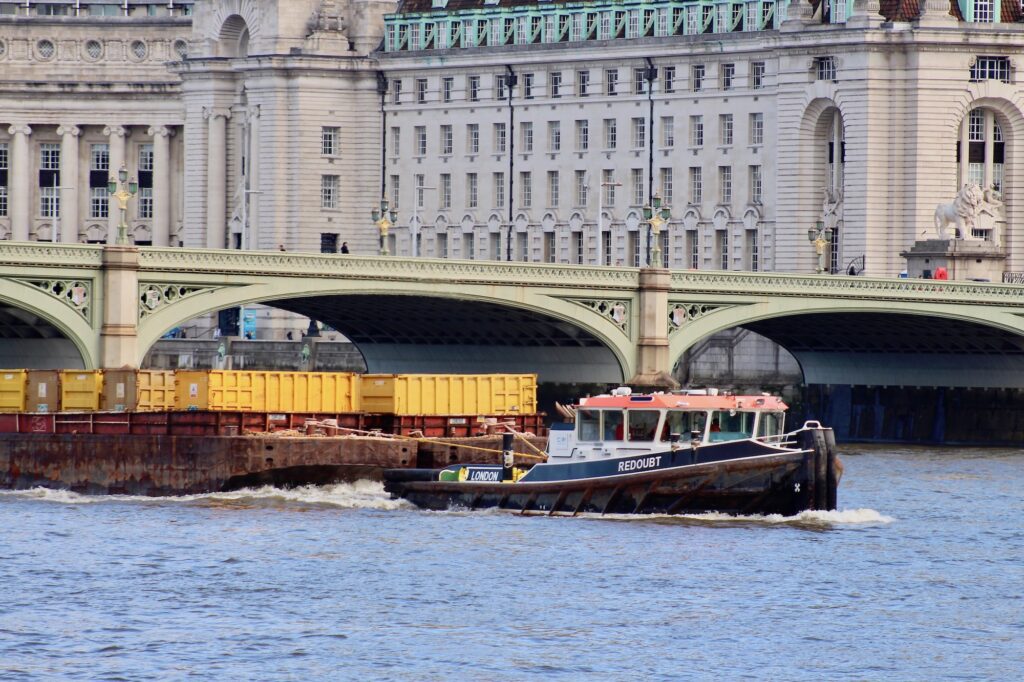

So there she stands, attentively, a young girl watching the incoming tide. Like many of us, she is perhaps dreaming, giving way to her imagination, or simply allowing her thoughts to swirl around with the infinite patterns she sees at her feet. If you’re not in a hurry when you’re walking by the river, stop for a moment and do the same…
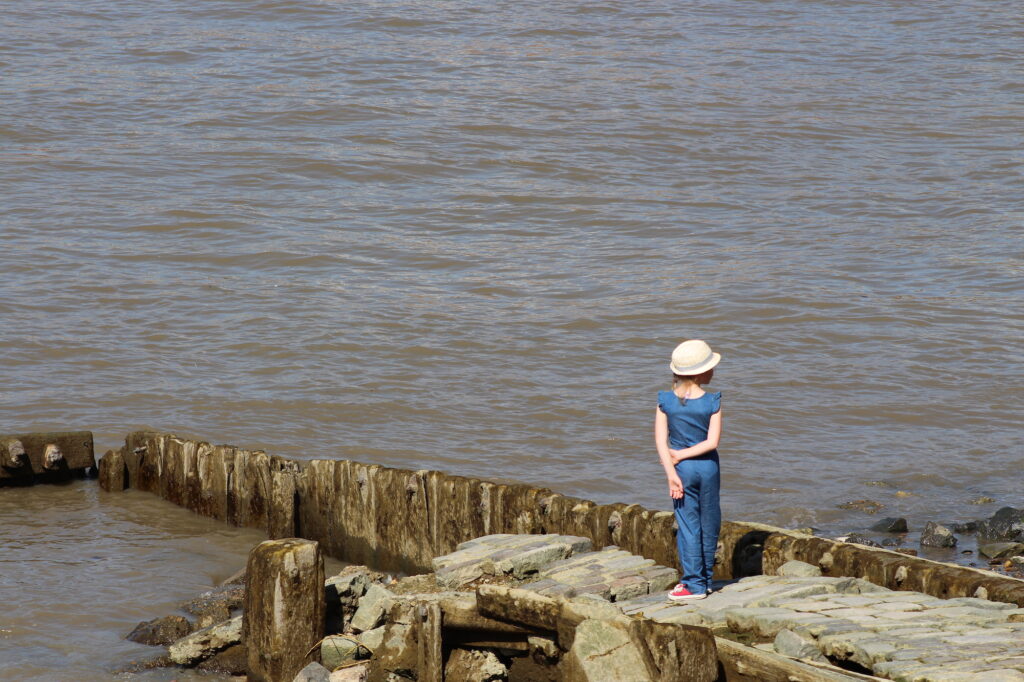
Further Information
See Tidal Ebb & Flow by Pogue Muhone.
The Port of London Authority has produced The Tideway Code, an indispensable guide for all “users of man-powered boats”.
Tides on the River Thames by Richard Jennings.
See Tower Beach by Simon Rushton (with a fabulous collection of vintage photos).